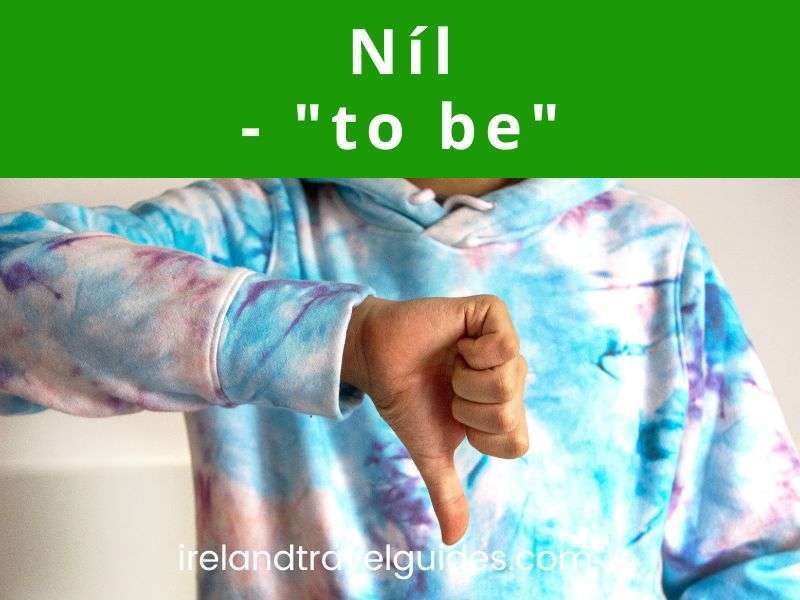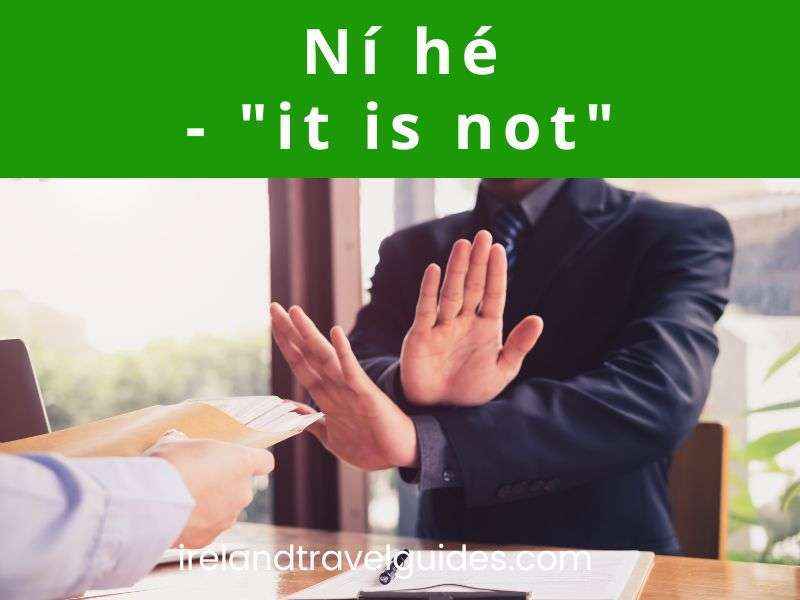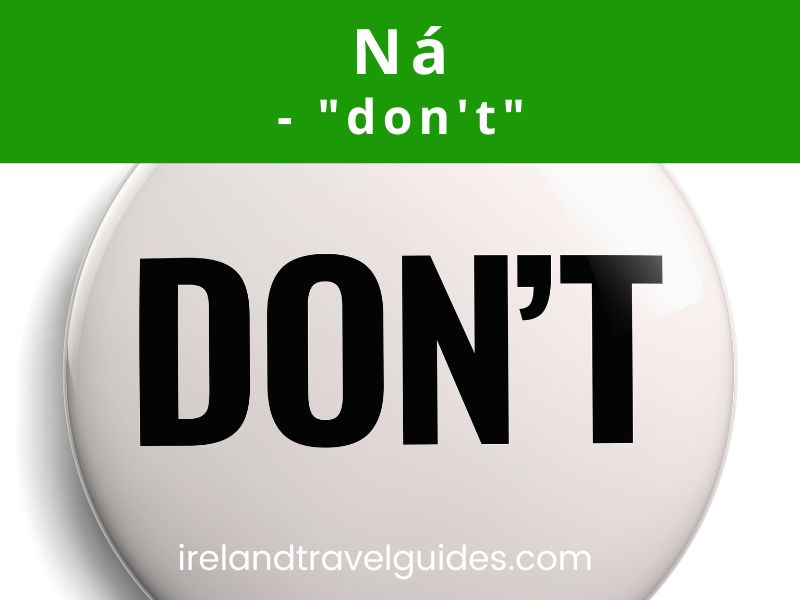Learning how to say “no” in Irish Gaelic is useful for anyone who wishes to communicate effectively in the language. With the language’s distinctive grammar system and accent, saying “no” in Irish Gaelic can be difficult for beginners.
However, with a little practice, you may rapidly grasp the basics of saying “no” in Irish Gaelic and confidently speak in many situations.
Today, we will look at the various ways to say “no” in Irish Gaelic and give you important suggestions and examples to help you improve your Irish language skills.
RELATED READ: 5 Ways to Say “Yes” In Irish Gaelic
Whether you’re a beginner eager to start learning the Irish language or an intermediate learner trying to extend your vocabulary, this tutorial will help you comfortably say “no” in Irish Gaelic.
Things you'll find in this article
5 Ways to Say “No” In Irish

Related Read: 5 Ways To Say Yes In Irish
1. Níl
This is the most commonly used form of saying “no” in Irish Gaelic. It is pronounced as “Neel.”
It is used to represent the negative version of the verb “to be”. “Nil mé sásta,” for example, indicates “I am not satisfied.”
The usage of “nil” to convey negation in Irish Gaelic is strongly related to the grammar structure of the language. “Nil” is the inverse of the word “tá,” which means “to be.” “tá” is used to describe a state of being in Irish Gaelic, such as “I am”, “you are”, “he/she/it is”, “we are”, “you all are”, and “they are”.
To make a negative sentence using “nil,” simply place it before the proper version of “tá.” For example:
● To say “I am not happy,” you might say “Nl mé sásta,” which translates precisely to “I am not satisfied.”
2. Ní hé
This is another way to say “no” in Irish Gaelic, and it is used to negate a statement or answer a question. It is pronounced “nee hay”.
“ni hé” is a manner of refuting a statement or answering a question in the negative in Irish Gaelic. It is frequently used to deliver a direct response to a yes/no question or to disagree with a statement.
“Ni hé” is made up of two parts: “ni” and “hé.” The negative particle “Ni” is used to negate the verb or statement, while “hé” indicates “that” or “it.”
When “ni hé” is employed in a sentence, “hé” usually comes after the subject, and “n” comes before the verb. For example,
● “N hé sin ceart” means “That’s not right.”
In this sentence, “sin” is the subject, “ceart” is the verb, and “hé” is the object.
3. Níor
This is a past tense negative version of the verb “to be,” pronounced “neeor.” This is used to say “no” in answer to a query or statement in the past tense. For example:
● “Nor fhreastail mé ar a gcruinni” which means “I did not attend the meeting.”
In Irish Gaelic, “nor” is the past tense negative version of the verb “tá,” which means “to be.” It is used to indicate negation in answer to a past-tense question or statement.
To make a negative statement in the past tense with “nor,” use it before the past tense version of “tá.” For example:
● “Nor fhreastail mé ar a gcruinni” which means “I did not attend the meeting.”
In the example above, “Fhreastail” is the past tense form of “freastal,” which means “to attend.”
In Irish Gaelic, the verb comes before the subject, precisely like in the present tense.
4. Ní maith liom
This phrase is pronounced “nee mah lum” and it translates to “I do not like.” It is used to convey a desire for or opinion that is not favorable. For example,
● “Ní maith liom úlla” which means “I don’t like apples”.
It is standard practice to convey a disapproving preference or opinion in Irish Gaelic by saying “N maith liom,” which translates literally to “I don’t like” in English. This phrase is made up of three components: “n” (meaning “not”), “maith” (meaning “good”), and “liom” (meaning “with me” or “to me”). “n” means “not,” “maith” means “good,” and “liom” means “with me” or “to me.”
Note that the expression “Na maith liom” can only be used to communicate a disapproving preference or opinion.
5. Ná
This is used to convey a command or restriction that should not be followed. This is pronounced “nah” in English.
The word “ná” is used to convey an order or restriction that is not to be followed in Irish Gaelic. In English, it is most commonly rendered as “don’t” or “let’s not” The word “ná” is an abbreviation for the imperative negative “ná déan,” which can be translated as “do not do.”
When “ná” is employed in a sentence, the imperative form of the word is used, with “ná” coming before the verb. For example,
● “Don’t worry” can be expressed as “Ná bodh imn’ ort.”
In this context, the imperative form of the verb “b,” which means “to be,” is written as “bodh.”

Hi, I’m Christine – a full-time traveler and career woman. Although I’m from the Philippines, my location independent career took me to over 60 countries for the past 12 years. I also lived in 4 continents – from the Caribbean, South East Asia, Africa and now in Europe. But despite living in several countries, my love for Ireland remains the same. A country that had been a part of my life since I was 14 because of my love for Irish music and bands. Ireland Travel Guides was born because of this passion and hopefully, in some little ways, this website will be able to help you on your next trip to Ireland.



